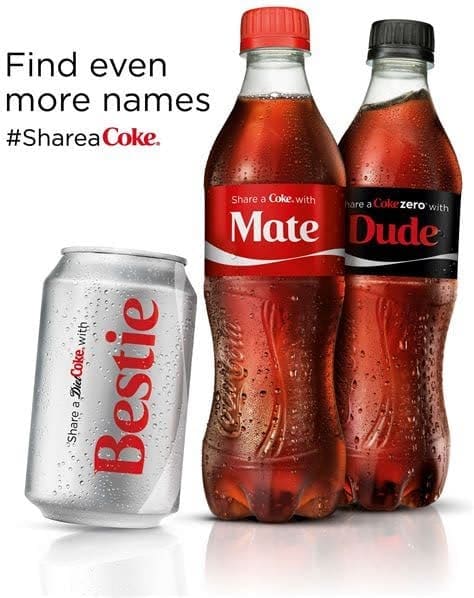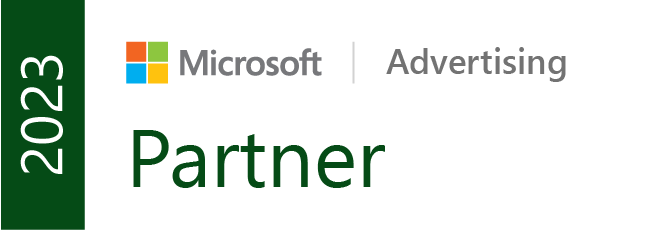
“The usual?” Those two simple words from your local barista make you feel special, don’t they? ☕ That’s not just good service – it’s personalization in action. And it’s exactly what makes the difference between copy that sells and copy that connects.
Why should you care about personalization?
Let’s talk numbers first:
- Personalized emails drive 6x more transactions (Epsilon)
- 80% of consumers prefer buying from brands that (Epsilon)
- Custom recommendations boost cart values by 24% (McKinsey & Company)
The numbers speak for themselves. But while everyone’s talking about personalization, most are doing it wrong. Let’s fix that.
Want results from YouTube Ads without the upfront risk?
Start now and only pay when they work!
Spots filling fast!
The three levels of personalization 🎯
- Level 1: Basic recognition
What most do: “Hi [First Name]!”
What you should do: “Welcome back! Still loving that red sweater you bought?” - Level 2: Behavioral understanding
What most do: “Check out our sale!” What you should do: “Since you love sustainable fashion, we thought you’d want first dibs on our new organic cotton collection.” 👕 - Level 3: Predictive Personalization
What most do: “Here’s our monthly newsletter!”
What you should do: “Based on your morning workout routine, here are three breakfast recipes that fit your schedule.” 🥑
Real winners: Brands nailing personalization 🏆
These brands aren’t just selling products—they’re building connections that keep customers coming back. Let’s dive into how personalization helps them stand out.
1. Coca-Cola's personal touch 🥤
When Coca-Cola swapped its logo for people’s names, it wasn’t just a clever rebranding—it was a way to make customers feel seen. The “Share a Coke” campaign turned a simple soda into a personal experience.

What they did:
• Custom name bottles that made people feel recognized and valued.
• Country-specific name selections to reflect local cultures and preferences.
• Clever cultural adaptations to resonate with different markets.
• Built-in social sharing opportunities that encouraged people to post their personalized bottles online.
The results speak volumes:
• In Australia, there was a 7% rise in young adult consumption and a 3% boost in overall sales in just six months (MarketingMag).
•In the U.S., Coca-Cola reversed over a decade of declining sales with a 2% increase (The Verge).
Why it works:
Coca-Cola turned a mass-market product into millions of personal moments. People don’t just buy products—they buy how those products make them feel.
2. Spotify’s magic touch 🎵
Spotify isn’t just a music app; it’s a personal DJ that knows exactly what you want to hear. Their approach to personalization has redefined how people discover and enjoy music.
What they did:
• Discover Weekly Playlists that deliver fresh tracks tailored to your listening habits every Monday.
• Spotify Wrapped, an annual feature that turns your listening stats into shareable highlights (Spotify Newsroom).
• Mood-based recommendations suggest playlists based on your vibe—whether you’re at the gym, unwinding, or hosting a party.
The results speak volumes:
Discover Weekly has driven over 2.3 billion hours of streaming, proving that when you make it personal, people stay engaged (Pragmatic Institute).
Why it works:
Spotify listens to its users—literally. By turning their preferences into customized experiences, they’ve built a platform that feels less like an app and more like a friend who knows your taste.
3. Nike's smart approach 👟
Nike doesn’t just sell sneakers—they help you hit your goals. Their personalization strategy is all about making customers feel supported on their fitness journeys.
What they did:
• Post-purchase workout suggestions in the Nike Training Club app to help customers get the most out of their gear.
• Weather-based recommendations suggest products like running shoes for rainy days or light gear for summer workouts.
• Training milestone celebrations with personalized messages and rewards to keep users motivated (Statista).
The results speak volumes:
Nike’s digital sales jumped 59% in a single quarter, with their apps playing a massive role in engaging customers and driving purchases (The Stack).
Why it works:
Nike goes beyond selling products—they become your cheerleader. By connecting their offerings to your personal goals, they turn customers into loyal fans.
4. Grammarly’s clever feedback 📝
Grammarly doesn’t just fix your grammar—it helps you grow as a writer. Their personalized approach makes the experience feel like having your own private writing coach.
What they did:
• Sent weekly progress reports, showing users how much they’ve written and where they’ve improved.
• Offered tailored improvement tips based on each user’s unique writing patterns.
• Shared achievement comparisons, letting users see how they stack up against others for a fun, competitive edge (DemandSage).
The results speak volumes:
Grammarly now has over 30 million daily active users, proving that personalization keeps people coming back for more (BrandVM).
Why it works:
Grammarly doesn’t just deliver stats—it delivers encouragement. By focusing on progress and actionable tips, they keep users engaged and motivated to improve.
Why personalization wins 🏅
Coca-Cola made people feel recognized. Spotify brought joy to everyday moments. Nike cheered people on, and Grammarly made writing better (and fun). These brands prove that when you focus on people—not just products—you create connections that last.
Your personalization playbook 🎮
Step 1: Listen first
• Track browsing patterns
• Monitor engagement
• Note purchase history
• Observe timing patterns
Step 2: Segment smartly split your audience by:
• Shopping behavior
• Engagement level
• Interest areas
• Purchase frequency
Step 3: Create custom paths develop different approaches for:
• First-time visitors
• Regular browsers
• Active customers
• VIP clients
Making it work in real life 💪
- Morning routine
Example: Fitness app notices you workout at 6 AM: “Early bird! Here’s tomorrow’s weather forecast and perfect pre-workout breakfast ideas.” ⏰ - Shopping pattern
Example: Fashion retailer spots a trend: “Love those minimalist pieces? Here’s how to style your recent purchases with our new arrivals.” 👗 - Engagement:
Example: Streaming service notices viewing habits: “Since you enjoyed ‘The Crown’, here’s a behind-the-scenes look at your favorite episode.” 🎬
Common pitfalls to avoid 🚫
- Over-personalization
Don’t: “We noticed you’ve been on our site 7 times this week…”
Do: “Welcome back! We saved your favorites for you.” - Incorrect assumptions
Don’t: “Ready to lose weight?”
Do: “What health goals can we help you achieve?” - Poor timing
Don’t: Send workout gear ads at midnight
Do: Time messages to match activity patterns
Your action plan 📝
Today:
• Audit your current copy
• Identify personalization opportunities
• Start collecting behavior data
This week:
• Create customer segments
• Draft personalized messages
• Set up tracking
This month:
• Test different approaches
• Measure engagement
• Refine based on results
The golden rule of personalization 🌟
Think of personalization as a good conversation. Listen more than you talk, respond thoughtfully, and always add value. When in doubt, ask yourself: “Would this feel natural in a face-to-face conversation?”
Final thought 💭
Remember our barista example? They don’t need fancy algorithms to make you feel special. They just pay attention and respond accordingly. That’s all great personalization really is – showing your audience you understand their world and care about their needs.
Unlock real results with YouTube ads, risk-free!
Zero upfront cost—pay only for results.
Limited availability.
Want more content like this?
Don’t miss out on the latest news and updates from the world of Direct Response advertising! Subscribe to our newsletter today 👇

Holly Preston, Lead Copywriter
Holly is behind most of Inceptly's successful creatives, supporting the team with her experience and imagination, making her an invaluable asset to Inceptly.
Like this post? Let's continue the conversation!
Get in touch with us by shooting us a quick email or tagging us on LinkedIn or Instagram, and sharing your thoughts. Your feedback helps us keep our blog relevant and interesting.
Get Our Newsletter
Need Help?
Get in touch with us for an insightful evaluation of your ads + actionable tips to help amp up your direct response revenue



